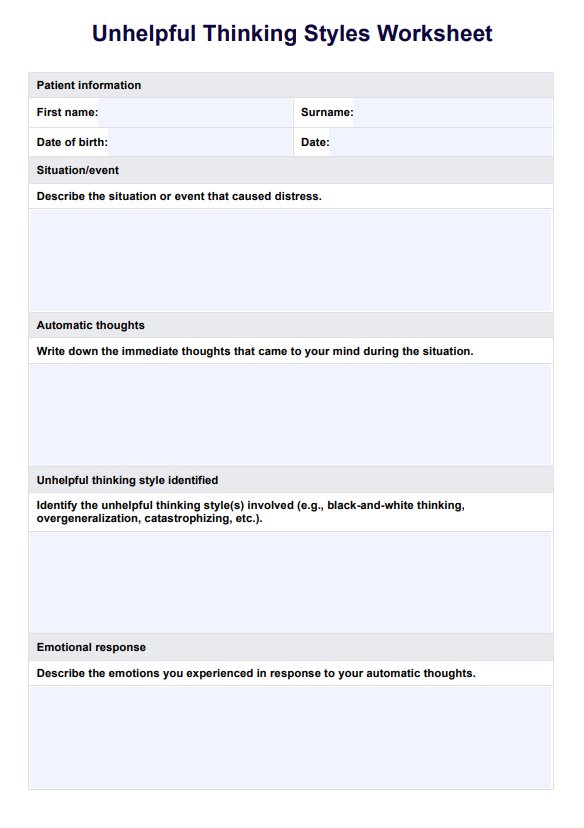Therapists, counselors, psychologists, and clients undergoing cognitive therapy can use the Unhelpful Thinking Styles Worksheet.

Unhelpful Thinking Styles Worksheet
Learn the potential of Unhelpful Thinking Styles Worksheets with Carepatron - a comprehensive, user-friendly platform for managing your mental health better.
Use Template
Unhelpful Thinking Styles Worksheet Template
Commonly asked questions
It is generally used when clients struggle with negative thought patterns and emotional distress.
Unhelpful Thinking Styles Worksheets identify and challenge cognitive distortions or unhelpful thinking styles, which can help reduce negative emotional states.
EHR and practice management software
Get started for free
*No credit card required
Free
$0/usd
Unlimited clients
Telehealth
1GB of storage
Client portal text
Automated billing and online payments











